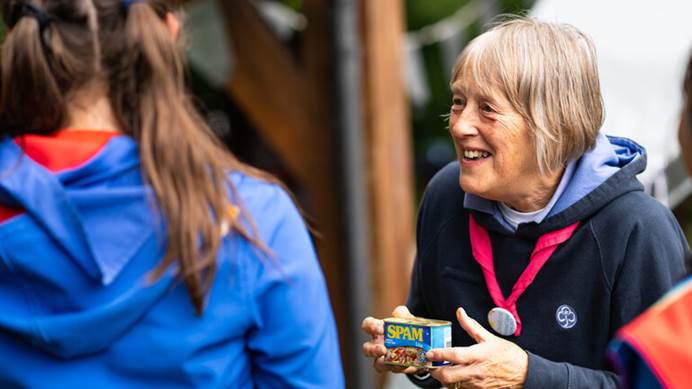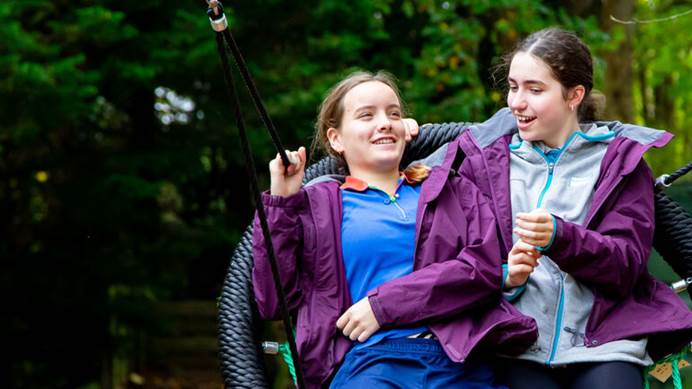How to write an event management plan
Event management plans help you and the team running the event ensure your event runs safely and smoothly
Suggested headings to put together an event management plan for running your own event.
What’s an event management plan?
An event management plan contains all the information about your event and gives an overview of it. The team running the event uses it to ensure the safety of all staff, contractors, participants and visitors at the event. The plan should be based on your risk assessment and potential for major incidents.
Depending on the size of your event, you may need to have conversations with public bodies such as the emergency services or local council. Your event management plan will be under constant review in the lead-up to your event. It should be shared with key members of your event team.
An event management plan often contains confidential or privileged information, so it’s important to keep this safe. As an event team you can share the writing of your plan, but the overall event lead is responsible for making sure the document is written and contains all relevant supporting documents for your event.
This document gives you suggested headings for your event management plan. Some sections will be relevant to your event, but others may not be. It’s important to consider all aspects of the event when putting together your event management plan.
Suggested headings for your event management plan
This outlines what’s in the document and why you’ve produced it.
This gives an overview of the event, detailing:
- Location of the event.
- Dates (including the build and take-down period).
- Approximately how many participants, leaders and volunteers there will be (including overnight and day visitors).
- Who’s responsible for what, including their contact details before and during the event (if they’re different).
- Organisational structure of the event.
- The event teams and who’s responsible for what.
- A high-level event timetable, including the build and take-down plans, and who’s responsible for what.
This outlines who’s responsible for health and safety during the event, including:
- Who’s responsible for which parts of the risk assessments.
- If you’re using contractors, where the contractors’ risk assessments will be held.
- Any emergency procedures (include these in appendices).
- Who’s responsible for first aid and medical support during the event. Will there be a central first aid point? How will the first aiders move around the site? How will you transport injured people?
- Consideration for infectious diseases. Think about isolation areas and any communications with participants who fall ill. There may be a separate control plan in place for this.
- Electricity for the event. Think about generator location and safety considerations around this, if participants need electricity in their camping areas, catering areas and contractors who need electricity.
- Gas and how it will be used during your event and the safety considerations around this.
- If you have any temporary structures, where will they be? Do they need safety restrictions? What are the specific installation requirements?
- Fire safety. Who’s responsible for the fire risk assessment? Outline what needs to happen if there’s a fire, and where the firefighting equipment will be.
- Do local residents and businesses need to be told about the event? Consider how and when to communicate this to them.
- Communication of health and safety policies and procedures to volunteers, participants and contractors.
- This includes pre-event communication, how you would contact them during the event, and any communication after the event.
- Will there be an information point during the event? Consider where this this will be, what hours it will open, and what provisions it will hold.
This outlines who’s responsible for food and water safety throughout the event, including:
- Putting checks in place to make sure vendors and/or contractors have appropriate qualifications.
- Who the local authority liaison is. Is this role needed for your event? How will local authority considerations be taken into account?
- Who’s responsible for the catering of the event. This might be different for volunteers and participants.
- On-site bar. How will you restrict this area to over 18s? What’s the policy on alcohol in other locations? How will this be monitored?
- The water supply to the site. Are temporary water lines needed? Think about who’s responsible for water safety and checks.
This outlines who’s responsible for security throughout the event. You may have different levels of security in place during the build period, daytime during the event, nighttime during the event, and the take-down period.
Think about:
- Lost property. Where is this located? How do participants and volunteers retrieve lost property?
- Missing people. What’s the procedure if someone goes missing? Where should participants who have lost their group go?
- Unauthorised people on site. How is this managed and communicated to the event team? How will you identify participants and volunteers?
- Gate security. How will you manage this? Will it be different for different times of the day and night?
- Medical emergencies. How are these communicated? How will you maintain privacy for the person getting medical attention?
- Traffic procedures. Is there a specific traffic management plan? When and where will marshals need to help with traffic?
- Event transport. Is the event putting on transport for participants/volunteers? How will this be managed? Do you need a separate accessible pick-up and drop-off? Where are the pick-up and drop-off locations?
- Where’s the parking? Are you having separate pick-up and drop-off locations? Is there is a coach-only area? How will these areas be marshalled? Where’s the allocated accessible parking?
- Deliveries. Do deliveries use the same entrance as everyone else? Is there a certain timeslot deliveries need to be made in? Do delivery drivers need to be escorted on-site?
- Criminal allegations. Who’s responsible for liaising with the authorities should this be needed?
- Site security team. What are they responsible for? Also consider their escalation process, how they communicate and any crowd management plans.
- Cash and card handling procedure. Who’s responsible for what? When will tills be cashed up? At what point will cash be removed from tills to a different location? How will this be managed?
This outlines who’s responsible for safeguarding throughout the event. It should reflect Girlguiding’s policies and procedures. If it’s a joint event, you’ll need to make sure everyone follows the safeguarding policies and procedures of all the organisations involved.
Consider:
- Who needs to have a DBS/PVG/Access NI check or Enhanced DBS/PVG/Access NI check?
- Is there a welfare team, and what are they responsible for? Include any time restrictions on when the welfare team will be available and how they should deal with incidents.
- Is there a quiet area for participants and volunteers who require it? Think about where it’s located and how this is communicated to participants and volunteers. Will this area have volunteers present?
- Do you need a designated safeguarding lead for your event?
- The size of your event. This will affect how many safeguarding team members you might need and who’s responsible for what.
- Creating a flow chart of who deals with what and when things get escalated up to the designated safeguarding lead.
- The event team and who’s responsible for what.
This outlines how and when you’ll send communication to participants and volunteers booked on to the event.
Think about:
- When do bookings open? When do final numbers need to be confirmed?
- How can participants book on to the event?
- How can volunteers book on to the event?
- Communication plan for both participants and volunteers. When will you email participants/volunteers and what will you include? When do participants/volunteers need to return key information?
- What are the booking terms and conditions? When are payments due?
- Post-event feedback and follow-up.
This outlines all the licensing you need to get for the event, who’s responsible for this, costs that may be involved, and when notification needs to happen.
Think about:
- Live music.
- Performance of dance or play.
- Showing of films.
- Playing of recorded music.
- Sale or supply of alcohol.
This outlines all the insurance needed for each element of your event.
Consider:
- Public liability. Are you covered under Girlguiding insurance? If your event has more than 5,000 people, have you notified the Girlguiding insurance team?
- Property and equipment.
- Vehicles. Check if your insurance has any age limits for drivers and if a driver licence check is needed.
- Cancellation insurance.
- Personal accident and medical expenses.
- Cash handling.
- Travel insurance.
- Third party activity providers – make sure you check the individual activity page in the adventure activity finder for more detail.
- Contractors.
- Food trucks or vendors.
This outlines the different areas or zones of your event (if you’re splitting it up in this way), including:
- A short summary of each activity.
- An activities map in the appendix.
- Entertainment. What entertainment is available and where? Who’s providing the entertainment? Or which volunteer is responsible for the entertainment?
You should also list all the third-party activity providers or entertainers you’ll have on-site, including:
- Company name.
- Contact name.
- Contact phone number.
- Details of equipment being brought on site.
- Location of activity.
- Date and time of arrival and departure.
- Any requirements for the activity.
In this section, you should include the names of all your volunteers, contractors and providers, and where they’re located on site. Include a small overview of what they’ll be doing (for example, ‘catering for volunteers is located in the red marquee providing all the volunteers on site with meals at the listed mealtimes’).
If you’re hiring in infrastructure like marquees, toilets, fencing or generators, for each provider record:
- Company name.
- Contact name.
- Contact phone number.
- Details of equipment being brought on site.
- Location of activity.
- Date and time of arrival and departure.
- Any requirements for the activity.
Depending on the size of the event you may want to split this section into food, facilities and other.
This outlines details of the catering provision throughout the event.
If participants are going to do their own catering, you need to think about:
- Proximity of the catering areas to sleeping areas and toilets.
- How food deliveries will work.
- Is there time in the programme for leaders to cater for their girls?
- How will volunteers be catered for?
If your event is centrally catered, you'll need to consider:
- Mealtimes.
- Staggering mealtimes to reduce bottle necks.
- Capacity of the catering venue.
- Will volunteers and participants be eating in the same venue?
- Menu, including dietary requirements and food intolerances.
- Who’s responsible for each element of the catering (ordering, cooking, food hygiene
and safety, serving and waste disposal).
If your event is using food trucks and pop-up venues for main meals, you'll need to
think about:
- Location.
- Letting participants and volunteers know what’s available and when.
- The capacity of food trucks.
This outlines all the buying areas participants and volunteers will have access to.
Think about:
- Locations.
- What they’ll be selling.
- How you can pay.
- Cash limits of each site.
- Cash floats. How much coinage is going to be needed at each location? When does this need to be available? How do volunteers in the shops request more change?
- Cashing up procedures.
This outlines the waste you’ll likely generate at your event, what could be recycled and how you can reduce waste.
Consider:
- Liquid waste. How and when will portable toilets be serviced? Are there any cesspits that will need to be emptied? Will the catering areas need water bowsers emptied?
- Dry waste. Are there separate provisions for recycling and general waste? How will this be communicated to participants and volunteers? How will this waste be removed from the site?
- Food waste. Is food waste being collected separately or in general waste? What will happen to any unused food at the end of the event? Are there any food banks or charities in the local area you can work with to minimise your food waste?
- Litter management. Where will the bins be located on site? When and how often will these be emptied? How will you litter pick the site at the end of the event?
In this section, you should consider anything that’s not already covered. This could include:
- Noise considerations. What’s the impact on local residents? How can you minimise disruption to the local area? Do you need to monitor noise? If so, how will you record this? Will the environmental health officer need to be consulted?
- Severe weather. You should include this in your major incident plan. Think about rain, flooding, extreme heat and wind.
- Girlguiding policies you’ll be adhering to (you can include these in the appendices).
Depending on the size of your event, your event management plan may become quite large. It’s important that each member of the core events team sees the plan and knows where it is during the event. Make sure the core events team sees any appendices too.
It’s the responsibility of team leaders to make sure their team of volunteers know which parts are relevant to them, and where they can find information during the event.
Download a copy of how to write an event management plan
Edit this document to adapt to your own event.



